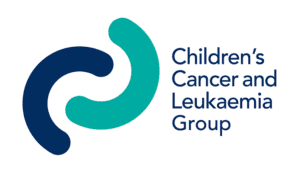Ewing sarcoma
Ewing sarcoma is a type of bone cancer in children and young people. It is the second most common primary sarcoma in children and young people. It most commonly occurs in the long bones, ribs, pelvis and spine (vertebral column).
Fewer than 30 children in the UK develop Ewing sarcoma each year. It usually occurs in the teenage years, and is more common in boys.
Although Ewing sarcoma is a type of bone cancer, it can also occur very rarely in the soft tissues. This is called extraosseous Ewing sarcoma. Another type of Ewing sarcoma is a primitive neuroectodermal tumour (PNET). These can be found in either the bone or soft tissue.
Causes
The exact causes of primary bone cancer are unknown. The development of Ewing sarcoma may be related in some way to times of rapid bone growth, which may explain why more cases are seen in teenagers. Like other cancers, it’s not infectious and cannot be passed on to other people.
Signs and symptoms
Pain is the most common symptom of bone cancer. It is frequently worse at night. However, symptoms may vary depending on the position and size of the cancer. There may be some swelling in the affected area if the tumour is close to the surface of the body and it may become tender to touch. This may cause a limp if in the leg or pelvis.
Bone cancer is sometimes discovered when a bone that has been weakened by cancer breaks after the child has a minor fall or accident. Occasionally, there may be fever or weight loss.
How Ewing sarcoma is diagnosed
Usually, you begin by seeing your GP, who will do an examination and may arrange tests or x-rays. If a sarcoma is suspected, your GP should refer you directly to a specialist hospital or bone tumour centre.
A variety of tests and investigations are needed to diagnose Ewing sarcoma, including an x-ray of the painful part of the bone, a chest x-ray and a blood test. A specialist doctor will remove a small piece of the tumour to look at under a microscope (biopsy). Other tests may be done, such as a bone scan, PET scan, a bone marrow biopsy; an MRI or CT scan may also be done.
Any tests and investigations that are needed will be explained to you.
Treatment
A combination of various treatments is used to treat Ewing sarcoma. These include chemotherapy, surgery and radiotherapy. Treatment will depend on a number of factors, including the size and position of the tumour.
Chemotherapy
Chemotherapy is the use of anti-cancer (cytotoxic) drugs to destroy cancer cells.
This is a very important component of treatment for the majority of children and young people with Ewing sarcoma and can help make surgery more straightforward. A combination of different chemotherapy drugs is given before surgery and continued afterwards in order to destroy any remaining cancer cells and prevent the sarcoma from spreading. Chemotherapy given in this way is called adjuvant chemotherapy.
Find out more about chemotherapy.
Surgery
If surgery is needed, it should be carried out at a specialist orthopaedic bone tumour centre. The aim of surgery is to remove the tumour without causing too much damage. If the tumour is in one of the main bones of the arm or leg, however, it may be necessary to remove the whole limb (amputation) or part of the affected bone. If only part of the affected bone is removed, this is known as limb-sparing surgery.
Amputation
Sometimes amputation of the limb is unavoidable if the cancer has affected the surrounding blood vessels and nerves. After amputation, a false limb will be fitted, and this will be regularly adjusted as needed. False limbs work very well. It should be possible to join in with normal activities and even sport.
Limb-sparing surgery
There are several ways in which limb-sparing surgery may be done. It may involve:
- replacing the bone with a prosthesis (a specially designed artificial part)
- replacing the bone with bone taken from another part of the body (a bone graft).
After limb-sparing surgery, it’s often able to use the limb almost normally. However, it is best not to take part in any contact sports, because any damage to the bone graft or prosthesis may require another major operation to repair or replace it. For children, the limb prosthesis will need to be lengthened from time to time as the bone grows. This may mean further short stays in hospital, although some prostheses can be lengthened during an outpatient procedure.
Radiotherapy
Radiotherapy treats cancer by using high energy rays that destroy cancer cells while doing as little harm as possible to normal cells. Ewing sarcoma responds very well to radiotherapy. It is often used after chemotherapy and before or after surgery. If the tumour is impossible to remove surgically, it is a good option.
Find out more about radiotherapy.
Follow-up care
You will have regular follow-up appointments, with x-rays or scans as necessary. Many children and young people with Ewing sarcoma can be cured. Even if the tumour comes back, further treatment may be given successfully.
Checks will happen every few months for the first three years after treatment and then every six months for another two years.
If you have specific concerns about the condition and treatment, it’s best to discuss them with your doctor who knows the situation in detail.
This information was written by the Children’s Cancer and Leukaemia Group (CCLG)
You might also want to look at
My child has cancer
If you're a parent or carer of a child diagnosed with cancer, get the right help and advice for us to support you.
My child has cancer
I have cancer
Your go-to place for everything you might need when you've been diagnosed with cancer.
I have cancer
Join our Facebook groups
Meet others with similar experiences, share your views and have your voice heard.
Join our Facebook groups
